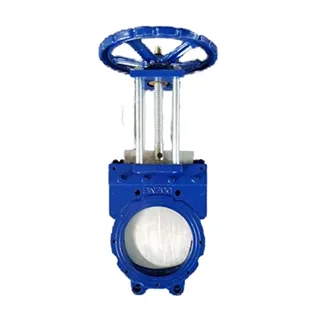single arch rubber expansion joint
Understanding Single Arch Rubber Expansion Joints Design and Applications
In various industrial applications, managing expansion and contraction due to temperature changes and external forces is crucial. One effective solution to these challenges is the use of single arch rubber expansion joints. These versatile components are designed to accommodate movements in piping systems, offering flexibility and durability in a variety of environments.
What is a Single Arch Rubber Expansion Joint?
A single arch rubber expansion joint is a flexible connector used in piping systems to absorb vibrations, accommodate thermal expansion, and reduce sound transmission. Typically made from layers of elastomeric rubber, reinforced with fabric or steel, these joints feature a single arch shape that allows for angular movement, lateral movement, and axial compression and extension. The design helps to mitigate stress on connected pipes and equipment, extending the lifespan of the overall system.
Key Features and Benefits
1. Flexibility and Movement Accommodation The primary purpose of single arch rubber expansion joints is to accommodate movement. The arch design allows the joint to flex in multiple directions, making it ideal for systems that endure various stresses due to temperature fluctuations, vibrations from machinery, and more.
2. Vibration Dampening These joints reduce the transmission of vibrations through the piping system. This feature is particularly beneficial in industrial environments where machines operate at high speeds, potentially causing significant vibrations that can lead to wear and tear on pipes and equipment.
3. Corrosion Resistance Rubber materials used in single arch expansion joints are often resistant to various chemicals and environmental factors. This resistance makes them suitable for use in demanding environments, including wastewater treatment, chemical processing, and marine applications.
4. Ease of Installation and Maintenance Single arch rubber expansion joints are relatively easy to install compared to rigid piping connections. Their flexibility allows for alignment adjustments during installation. Moreover, maintenance is straightforward, as these components can often be replaced without extensive downtime.
single arch rubber expansion joint

5. Cost-Effectiveness Compared to metal expansion joints, rubber joints are typically less expensive. Their ability to perform effectively without the need for additional support structures makes them a cost-effective choice for many applications.
Applications of Single Arch Rubber Expansion Joints
Single arch rubber expansion joints find applications across a wide range of industries. Some notable examples include
- Pumping Systems In pumping applications, these joints can absorb vibrations and mitigate water hammer effects, thereby protecting pumps and extending their operational life. - HVAC Systems In heating, ventilation, and air conditioning systems, expansion joints help maintain proper airflow by accommodating thermal expansion, ultimately leading to improved energy efficiency.
- Chemical Plants The chemical resistance of rubber expansion joints makes them suitable for handling aggressive fluids in various chemical processing applications.
- Marine Applications Employed in shipbuilding and other maritime structures, these joints can withstand the harsh marine environment while providing the necessary flexibility.
- Wastewater Treatment In treatment facilities, rubber expansion joints help manage the thermal and mechanical stresses typically encountered in such environments, ensuring reliable operation.
Conclusion
Single arch rubber expansion joints are essential components in various piping systems, offering flexibility, durability, and cost-effectiveness. Their ability to accommodate movement, dampen vibrations, and resist corrosion makes them an attractive choice for many industrial applications. As industries continue to evolve, the importance of effective piping solutions remains paramount, solidifying the role of single arch rubber expansion joints in modern engineering and infrastructure. Whether in pumping systems, HVAC installations, chemical plants, or marine applications, these joints contribute significantly to operational efficiency and equipment longevity. As technology progresses, we can expect continued innovation in the design and materials used for rubber expansion joints, further enhancing their performance and reliability in diverse applications.
-
Breakthrough in Domestic Low Temperature Valve Technology in ChinaNewsAug.18,2025
-
From Machinery to Intelligent Brain: The Digital Transformation Wave of the Valve IndustryNewsAug.18,2025
-
PCVEXPO 2025NewsAug.18,2025
-
The Key to Fluid Control: Exploring the Advantages of Ball Valves in Industrial SystemsNewsJul.09,2025
-
The Versatile World of 1, 2, and 3 Piece Ball ValvesNewsJul.09,2025
-
Stainless Steel Ball Valves: The Ideal Choice for Efficient Flow ControlNewsJul.09,2025
-
Optimizing Fluid Control with Ball Float ValvesNewsJul.09,2025




